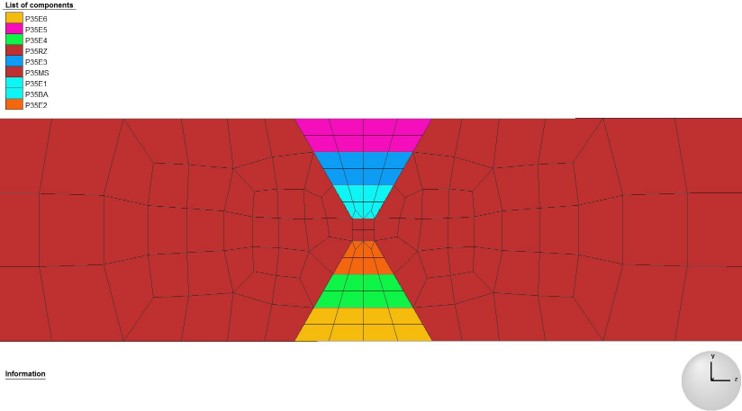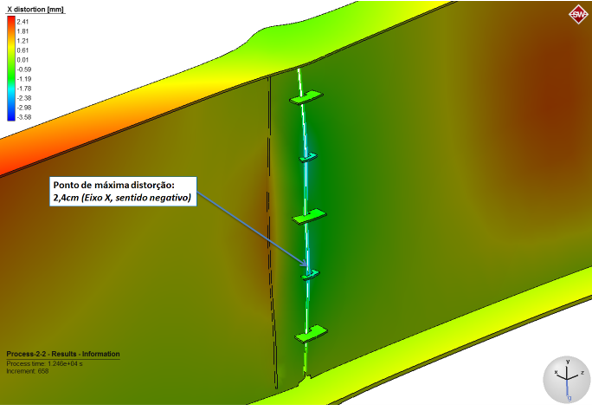WELDING PROCESS SIMULATION
Metal parts manufactured by welding are subjected to different failure modes when compared to other manufacturing processes. The metallurgical changes that occurs during fusion of metals are inherent to the welding process, causing heterogeneity of mechanical behavior and possibly reducing the component’s life. The geometrical discontinuities generated and the distortions introduced by heat generation, are some of the aspects that can affect the life of a particular welded component.
Through welding simulations, the possible distortions are predictable, and therefore, effective means can be proposed to constrain the parts during the welding process, in order to reduce distortion effects.
The calculation of temperature fields during a welding process can be useful in determining the geometrical extent of mechanical properties alterations within the material, providing rich information to fatigue and fracture mechanics calculations. Furthermore, pre-heating and welding parameters are factors that change the temperature field, reducing or increasing the distortions generated by welding.
The automotive industry, for example, uses welding manufacturing processes in several components subjected to cyclic loads, and therefore prone to fatigue. Rear suspension axles are commonly manufactured by welding, which the limiting factor for the component’s life, in normal operation, is the fatigue failure.
The numerical simulation of welding processes is an innovative technique for the development of welded components. The welding process can be simulated in order to reduce the effects of distortion, keep geometric tolerances under control, minimize residual stress, therefore, allowing the optimal welding parameters to be determined.



